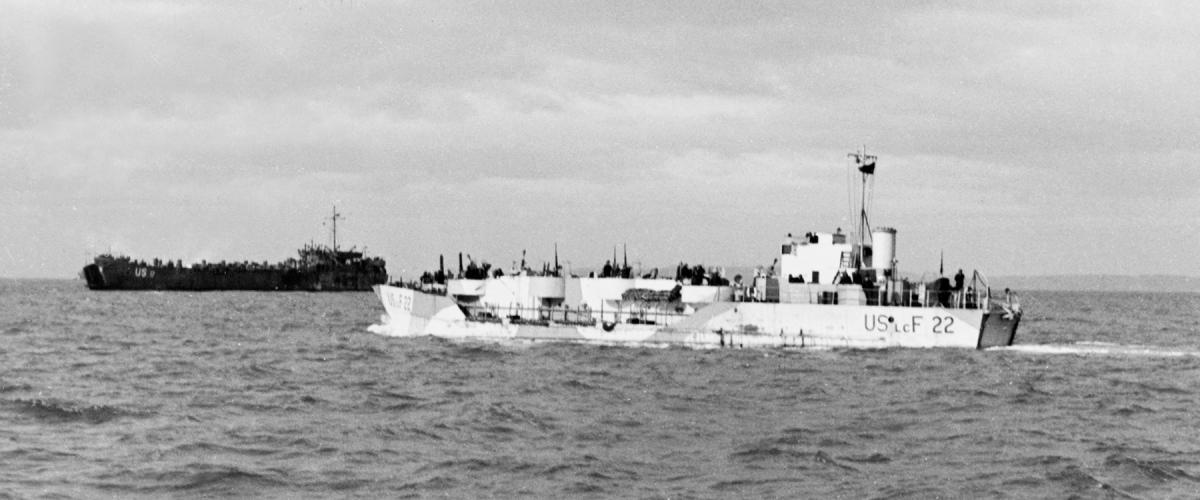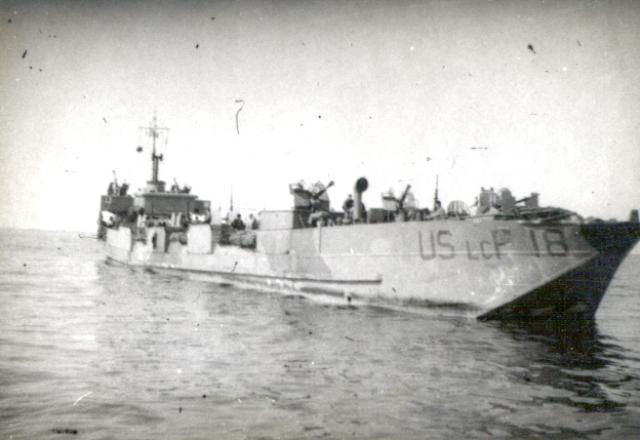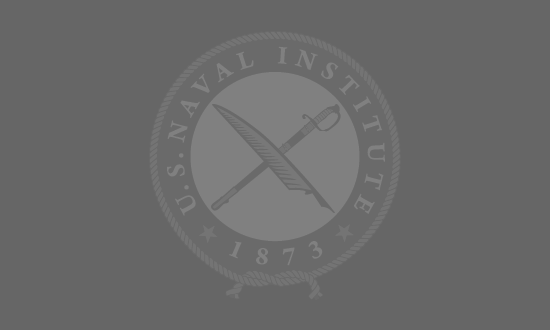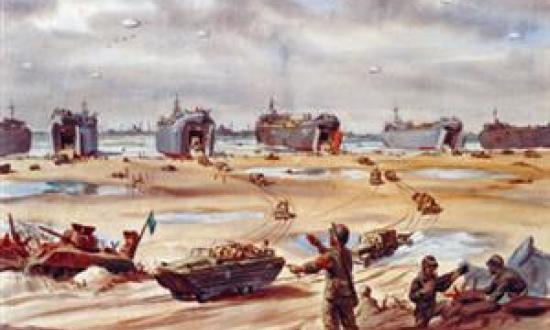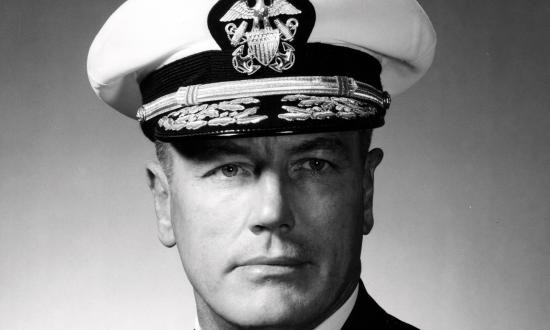The massive invasion fleet of 5,000-plus vessels that sortied from English ports for Operation Neptune in June 1944 included a little-remembered class of gunfire-support ships designated LCFs (landing craft, flak). They were conversions from the versatile Royal Navy landing craft, tank (LCT) platform. Eleven of them were turned over to the U.S. Navy for D-Day.
Converting the LCTs involved welding shut the bow ramp and installing a steel deck over the open well for the gun mounts, creating belowdeck spaces for officers’ country, crew berthing, messing, magazines, and stores.
The LCFs were 195.8 feet long with 21-foot beam and light displacement of 440 tons. With a fuel capacity of 24 tons, their endurance was 2,700 miles at 9.5 knots. Their armament consisted of four 40-mm pom-pom cannon and eight 20-mm machine guns. The ships’ complement included four officers and about 60 enlisted men, the majority of whom were gunners.
The U.S.-flagged LCFs were commanded and manned by U.S. Naval Reserve officers, mostly “90-Day Wonders” who had been fast-tracked through abbreviated midshipmen’s indoctrination schools. Most had no sea time.
On 29 May 1944, the skippers received their first briefing on the Neptune plan and were given a 4-inch-thick “Top Secret” operation order to be studied and mastered in a few short days.
The four LCFs for Utah Beach sortied from Salcombe, England, in the late afternoon of 3 June, part of the 120-ship Convoy U-2A(1), for what proved to be a stormy and hair-raising Channel crossing.
In his magisterial History of United States Naval Operations in World War II, Samuel Eliot Morison wrote in Volume 11, The Invasion of France and Germany, 1944–1945 (pp. 102–3): “Noteworthy was the seamanship displayed by the much-battered small-craft convoy U-2A(1) . . . which, after being turned back by the postponement of D-Day, arrived off Portland Harbor near midnight 4 June, only to find most of the berths taken. It set forth again on the morning of 5 June and arrived at the transport area precisely on schedule after passing three nights and two days at sea…. Most of the commanding officers had been on their bridges continuously for 70 hours.”
At dawn on 6 June, four LCFs led the first wave of landing craft into Utah Beach. LCF-31 exploded a mine and sank quickly. The other three provided close-in gunfire support on the flanks, firing on targets of opportunity ashore, but their primary mission of antiaircraft protection was rendered unnecessary by the total dominance of the skies by Allied air power.
The primary danger for the invasion fleet at Utah Beach was the presence of German influence mines, which sank or badly damaged more than 60 Force “U” ships and landing craft with heavy casualties.
When they returned to England in August, the LCFs were turned back over to the Royal Navy. Most of them eventually were scrapped or sold to other countries after the war. Some of the 90-Day Wonders were sent to the Pacific. Others went home.



